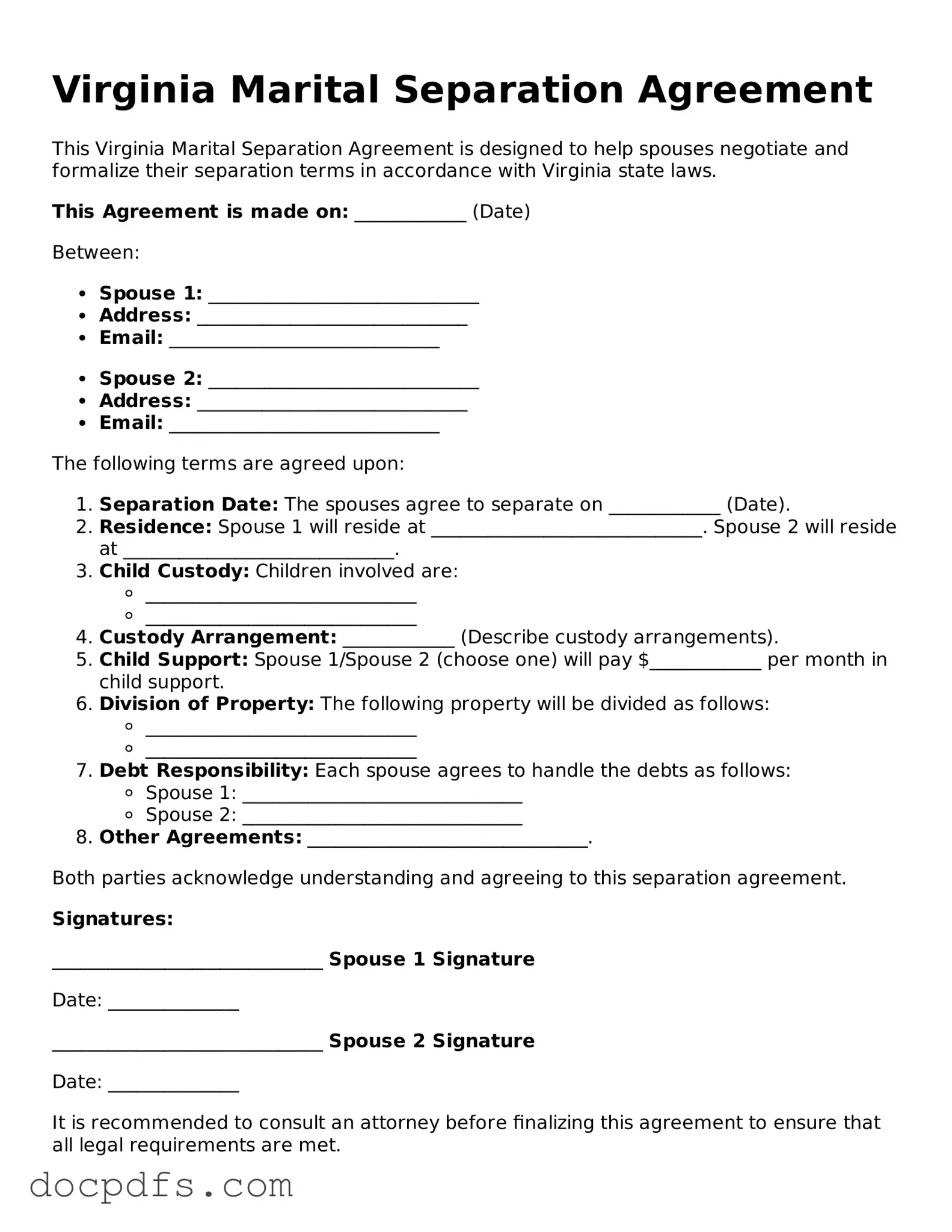Free Virginia Marital Separation Agreement Form
The Virginia Marital Separation Agreement is a legal document that outlines the terms and conditions agreed upon by spouses who wish to live separately while remaining legally married. This agreement can address various issues such as property division, child custody, and financial responsibilities. By clearly defining each party's rights and obligations, the agreement aims to minimize conflicts during the separation process.
Open Marital Separation Agreement Editor Now
